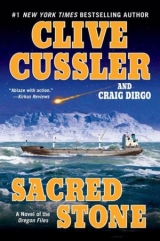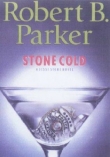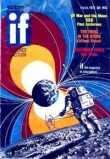
Текст книги "Sacred Stone"
Автор книги: Clive Cussler
Жанр:
Морские приключения
сообщить о нарушении
Текущая страница: 22 (всего у книги 26 страниц)
49
EVEN IN Acountry as steeped in tradition as Saudi Arabia, the modern world has a way of intruding upon the past. The Prophet’s Mosque in Medina was one such example. A massive construction project initiated in 1985 and completed in 1992 expanded and updated the facilities. The area was enlarged fifteenfold to cover an area of nearly 1.8 million square feet. The additional space allows almost three-quarters of a million visitors to be in the site at the same time. Three new buildings were added, along with a massive courtyard built from marble and inlaid with geometric designs. Twenty-seven additional courtyards topped with intricate retractable domes now graced the skyline, along with two more large areas that are topped with six large mechanical umbrellas that could be opened or closed depending on the weather.
Six minarets, soaring 360 feet in the air, were constructed around the perimeter—each topped with giant brass crescents weighing nearly five tons. Ornate tiled and gold gilding were added to various areas, and spotlights and beacons illuminated the various architectural details.
The physical plants were completely reworked. Escalators were installed to move the pilgrims to the upper levels, and a gigantic air-conditioning system was built. The cooling system, one of the largest ever constructed, pumps seventeen thousand gallons per minute of chilled water through pipes that were tunneled in under the lower level.
The entire system is managed from a control center a little over four miles from the mosque.
The rebuilding of the Prophet’s Mosque and the additional construction around the Kaaba in Mecca were estimated to cost the Saudi Arabian government nearly $20 billion. The primary contractor for the massive construction project at the Prophet’s Mosque was a company owned by the family of Osama bin Ladin.
THE LEADER OF the Indian mercenaries stared at the diagrams again. Before he boarded the ship in Rabigh, Hickman had made it clear he wanted the tomb of Muhammad at the Prophet’s Mosque destroyed. The fact that bin Ladin had profited from the rebuilding galled him—Hickman wanted to erase the work from the planet.
A bonus of ten times their agreed-upon fee awaited the Hindus if they were successful.
They had been paid one million in gold so far—a king’s ransom in their own country. Even split up among twelve men it was enough for each of them to live out the rest of their days in comfort. The additional ten million they had been promised would make them utterly rich.
All they needed to do was make it to Medina and sneak into the underground tunnels where the chilled water pipes ran under the mosque, lay the charges where the diagram directed them, and make their way back to Rabigh, where Hickman had another ship waiting to transport them across the Red Sea to Port Sudan, Egypt.
There a jet would be waiting with the gold and several guards. They would pass the next three days in Port Sudan. Once the Prophet’s Mosque was destroyed on the morning of the tenth, the start of the hajj, the jet would fly them back to India with their gold. Performance before final payment was a lesson Hickman had learned decades before.
IF THERE IS one single key to a successful operation, that key is to never rely on a single system. The Desert One affair during the Iranian hostage crisis in 1980 had proved that doctrine. The president wanted to go in with the minimum number of helicopters, and once the first aircraft began to fail, the entire mission unraveled.
When faced with a question of having one weapon or one thousand, you should always go for the largest possible number. Systems fail, bombs can be duds, and weapons jam.
Both Kasim and Skutter were aware of this fact.
“Sir, the primary threat right now is the shipping containers in Riyadh,” Skutter said. “You have already verified that they were delivered. And as soon as they are opened—which has to be sometime before the start of the hajj, which we believe everything else keys off—this entire operation could fall apart.”
“The first case of viral poisoning and Saudi Arabia will clamp down on everything,” Kasim agreed.
The two men were standing in front of a map tacked to a bulletin board in the hangar. On a table nearby were stacks of Qatari passports and pilgrim documents for Kasim and each of the thirty-seven team members. The emir’s government officials had been working on them all night. Because they were real and not forgeries, they would withstand any inspection by Saudi authorities. Since Saudi visas were usually given to Qatari nationals without question, the men now had a way to gain access to the kingdom.
“Then we send in two teams of four men each,” Kasim continued. “That leaves us with thirty men to enter Mecca.”
Skutter pointed to an aerial map that the NSA had faxed to Kasim in Qatar. The photograph showed the containment pen at the Riyadh Airport Cargo Facility. “Using the tracking numbers your people recovered from the shipment in England, we can place the containers here.”
Skutter circled the three containers with a highlighter.
“Damn good thing,” Kasim said, “they paint stencil identification numbers on the roofs of all the containers so the crane operators can see them. Otherwise we’d waste a lot of time searching through that mass of supplies.”
“Once we have the two teams there,” Skutter asked, “how do you want to handle it?”
“Secure and remove,” Kasim said. “Once we establish that they are still sealed, we need to load them onto trucks and take them out into the desert until we determine what to do with them—either destroy them at that site or move them to a safe location.”
“I read the personnel files,” Skutter said. “We have a U.S. Army warrant officer whose name is Colgan. He’s in Army Intelligence and has done some undercover work.”
“Colgan?” Kasim said. “Sounds Irish.”
“He converted to Islam in college,” Skutter said. “His file shows an exemplary service record and notes that he is level-headed and methodical. I think he can handle this.”
“Go ahead and brief him,” Kasim said, “and handpick the rest of his team. Then get them on the next plane leaving Qatar for Riyadh. According to the emir’s people, there is a shuttle flight that leaves here at six p.m.”
“Very good, sir,” Skutter said.
“That leaves us with the mosques in Mecca and Medina,” Kasim said. “I’ll lead the team into Mecca and you’ll handle Medina. We’ll each have fourteen men at our disposal, and our primary purpose will be to detect and disarm whatever type of destructive devices we believe Hickman has placed. We go in, search and remove, and get out again without being detected.”
“What if Hickman has switched the meteorites?”
“The rest of my people are working on that as we speak,” Kasim said.
THE INDIAN LEADER stared out the window of the house in Rabigh. The sun was set low in the sky and night would soon be upon them. It was about two hundred miles from Rabigh to Medina, or nearly four hours’ drive time. Once there they’d need a few hours to check the lay of the land, find the access panel to the underground tunnel outside the mosque Hickman had marked on the diagram, and then enter.
It would take less than an hour to place the charges and exit the tunnel again.
Then there was the four-hour drive back to Rabigh. If the Hindus wanted to be on the boat to Egypt by sunrise tomorrow, January 6, as scheduled, they’d need to get moving.
After checking the crate of explosives again, the leader motioned for it to be carried outside to the truck. Eight minutes later they were driving down the road to Medina.
HANLEY WAS FINDING that Overholt’s word was gold this time around. He was getting whatever he asked for. And he was getting it fast.
“We’re ready to start beaming,” Overholt said to Hanley over the phone. “Open up the link and check the picture quality.”
Hanley motioned to Stone, who brought the images up on a monitor. Cameras at the entrance and exit to the Suez Canal were showing the passing ships as clear as if you were standing on the shore.
“Beautiful,” Hanley said.
“What else do you need?” Overholt asked.
“Does the Agency have a Muslim agent in Saudi Arabia?”
“We have half a dozen,” Overholt said.
“We need to know if the meteorite has been switched already,” Hanley said.
“Even our people can’t get inside the curtain,” Overholt said. “There are four guards that walk the perimeter continuously.”
“But they can get inside al-Haram mosque,” Hanley said. “Have him come as close to the curtain as he can with a Geiger counter and then have him bow down and pray. If the Greenland meteorite is inside the curtain already, he should pick up radioactivity.”
“Excellent,” Overholt said. “We’ll get on it right away and report back as soon as we know anything. What else?”
“We need overhead satellite shots of both mosques as detailed as possible along with any engineering diagrams, floor plans, layouts or whatever else you can locate.”
“I’ll have a package assembled as soon as possible, and I’ll have it sent by satellite transmission and followed up by a courier,” Overholt said.
“Good,” Hanley said. “The plan is for the Corporation to imagine we were Hickman and proceed as he would. Once we have the documents, we’re going to assemble our team and plan how we would go about destroying the mosques if that was our mission.”
“I’m staying in my office for the duration,” Overholt said. “If you hear anything—or need anything—call at any hour.”
“Thank you, sir,” Hanley said. “We’ll get this done for you.”
UPON LANDING IN Tel Aviv, Cabrillo rented a car and drove as close as he could get to the Dome of the Rock. He entered through the gate near the al-Aqsa Mosque then crossed over into the courtyard where the Dome of the Rock was centered. The entire complex was some thirty-five acres in size, with garden and fountains and various shrines. The courtyard was crowded with tourists and scholars.
Cabrillo walked into the Dome building and stared at the spotlighted rock.
It was easy to see this was once the top of the hill—the rough outcropping jutted up, surrounded by a viewing area—but it was the history, not any particular physical attribute of the rock, that made it such a sacred site. For all intents and purposes, the rock looked like thousands of others nearby.
Cabrillo left the Dome building and headed underground to the Musalla Marwan.
The Musalla Marwan lies under the paved courtyard in the southeast corner of the complex. A vast underground area also known as Solomon’s Stables, the subterranean space is domed and bisected by long walls with columns and arches. For the most part, the space is open floor and is now used as an overflow area for Friday prayers.
Here, in the cool underground, Cabrillo could feel the history seep into his bones.
Millions of souls had passed through here over the centuries, seeking a closer contact with their God. The area was quiet, with only the sound of water dripping from some faraway spring, and for a moment Cabrillo was hit with the gravity of Hickman’s plans. Somewhere right now was a man so bound in hatred and infused with revenge for his dead son that he wanted to rid the world of three such places. Cabrillo felt a chill. Millions of men had fought and died nearby and their spirits felt close.
Cabrillo turned to leave.
Whatever nefarious plan Hickman had in store would start here—and it was up to Cabrillo and the Corporation to stop him in his tracks. He climbed up the stone steps and reentered the courtyard area. A dry wind brushed across him. He walked for the gate.
AT AN AIRFIELD near Port Said, Egypt, Pieter Vanderwald taxied to a stop in an ancient Douglas DC-3. The plane had served a long and useful life hauling cargo throughout the African continent. The twin-engine DC-3 is a legendary aircraft; thousands were built over the years, starting in 1935, and hundreds are still in service. The military version of the plane, the C-47, was used extensively in World War II, Korea, and even Vietnam, where they were outfitted as gunships. Also known as the Dakota, the Skytrain, Skytrooper, and Doug, it was most often referred to as Gooney Bird.
The Gooney Bird Vanderwald was piloting had one foot in the aviation graveyard.
Destined for the scrap yard in South Africa and lacking an air worthiness certificate, Vanderwald had purchased her for a song. Quite frankly, he was surprised she had made the trip north, but she had. Now, if the old plane had but one more flight in her bones, she could die a noble death.
The DC-3 is a tail dragger. The cockpit sits high to the front with the cargo compartment stretching back in an angle toward the runway. Her length is sixty-four and a half feet, her wingspan ninety-five.
Powered by a pair of 1,000-horsepower radial engines, she has a range of fifteen hundred miles and a cruising speed of between 155 and 190 miles per hour. With flaps extended, she can slow to almost a crawl before landing.
In an age when planes are as sleek and smooth as a knife, the DC-3 is an anvil. Solid, unyielding, and always ready, the plane asks little and goes about her job with little fanfare. She is a pickup truck in a parking lot full of Corvettes.
Vanderwald shut off the engines and slid back the cockpit window.
“Chock the wheels, fill her up,” he shouted to the Egyptian attendant who had guided him to the spot on the runway. “And top off the oil. Someone will be here to pick her up soon for the next leg.”
Then Vanderwald walked down the slanted cockpit area, unfolded the stair, and stepped onto the runway. Two hours later, he was in Cairo waiting for a flight back to Johannesburg. As soon as the funds were wired to his account, his part would be over.
CABRILLO ANSWERED HIS phone just as he was reaching the rental car.
“The Hawker just crossed over the edge of the Mediterranean,” Hanley said. “It looks like she is bound for Rome.”
“Call Overholt and have the plane impounded when it lands in Rome,” Cabrillo ordered. “Maybe Hickman has decided to pull out.”
“I doubt it,” Hanley said.
“Me, too,” Cabrillo said. “In fact, I’ll bet that’s not the case.”
“Then how is he planning to make his escape?”
Cabrillo paused. “I don’t think he is—I think he’s planning a suicide mission.”
The line was silent. “We’ll factor that in,” Hanley said at last.
“I have to go meet with the Mossad,” Cabrillo said. “I’ll call you after.”
THE SUN WAS setting as the old pearling ship carrying Hickman entered the Khalij as-Suways at the northern end of the Red Sea. The five-hundred-mile trip from Rabigh had been slow but steady, and the ship would be entering the Suez Canal this evening as planned. The ship was cramped and Hickman had spent his time alternating between the small cockpit where the helmsman steered and the rear deck where the air was not polluted with the thin cigars the pilot chain-smoked.
Abraham’s Stone was wrapped in a tarp on the deck next to Hickman’s single bag, which contained a change of clothes, some basic toiletries, and a three-ring folder that he had been studying off and on the entire voyage.
“HERE’S WHAT I have,” Huxley said as she walked into the control room. “I took the photographs Halpert and the others shot at Maidenhead, then erased the gas mask and used the biometric computer program to create a composite.”
Hanley took the disc and walked over to Stone, who inserted it into the drive on the main computer. An image popped up on the monitor.
“Hell,” Hanley said, “he doesn’t look anything like the rumors.”
“It’s weird,” Huxley agreed, “but it makes sense. If I was a recluse like Hickman, I would want to foster the most normal appearance I could have—that way I could blend in wherever I went.”
“I guess the Howard Hughes rumors were just that,” Stone said, “rumors.”
“Click forward, Stoney,” Huxley said.
Stone entered the commands. A 3-D image of the outline of a man appeared.
“This is a re-creation of his movements,” Huxley said. “Each individual has unique mannerisms. Do you know what the security teams at casinos use to identify cheaters?”
“What?” Stone asked.
“Their walk,” Huxley said. “A person can use disguises, alter his appearance, even some personal mannerisms—but no one ever thinks to change the way they walk or carry themselves.”
Stone played with the computer and the image walked, turned and moved his arms.
“Let’s make a copy and send it to Overholt,” Hanley ordered. “He can distribute it to the Israeli officials.”
“I can overlay this with the live cameras from the Suez,” Stone offered.
“Do it,” Hanley said.
AT THE SAME time Hanley was staring at the pictures of Hickman, eight men exited a commercial flight from Qatar to Riyadh and walked through customs without a hitch. Meeting outside the baggage claim area, they climbed into a white Chevrolet Suburban that the State Department had borrowed from an oil company official.
Then they made their way to a safe house to wait for nightfall.
“WE CAN DO what you need this evening,” the head of the Mossad, the Israeli intelligence agency, said, “but we can’t use dogs—we’ll have to do it with agents carrying chemical sniffers. Dogs in a mosque are a no-no.”
“Will there be any problems?” Cabrillo asked.
“A few years ago when the Israeli prime minister went to the Dome of the Rock there was rioting for weeks afterward,” he said. “We’ll need to do it swiftly and quietly.”
“Can your people completely cover the entire area?”
“Mr. Cabrillo,” the man said, “Israel is faced with terrorist bombings on a weekly basis. If there are any explosives inside Haram al-Sharif, you’ll know about it by sunrise tomorrow.”
“And you will defuse anything you find?” Cabrillo asked.
“Defuse or remove,” he said, “whatever is safer.”
“MEN, PLEASE TAKE your seats,” Kasim said.
The twenty-eight remaining men sat down. Skutter stood alongside Kasim at the blackboard. “Who here has never ridden a motorcycle?” Kasim asked.
Ten of the men raised their hands.
“This is going to be tough for you,” Kasim said, “but we’ve assembled some instructors for a crash course. After we finish here, you ten will need to go outside and start practicing. In four hours’ time you should all have a basic knowledge of the fundamentals.”
The ten men nodded.
“Here’s the situation,” Kasim continued. “We cannot enter Saudi Arabia using a commercial flight. The risk of interception is simply too great. From here in Qatar to Mecca is over eight hundred miles, and that route is across bad desert with no fuel supplies, so what we came up with is this: the emir has arranged a cargo flight that will take us to Al-Hidayah in Yemen, and from there it is less than five hundred miles to Jeddah, Saudi Arabia, along a paved road that runs along the Red Sea. The emir paid off the Yemeni authorities and cleaned out a motorcycle distribution warehouse here in Qatar for our transportation. The motorcycles have a couple of advantages—the first is that we can cross the border above the checkpoint to avoid detection by driving across a stretch of desert then back to the road once we’re inside Saudi Arabia. The second is the gas mileage—there are several cities along the road for fueling but they are far apart—the motorcycles can make it from city to city. The third is the most important. Each of us will be alone on our bikes—if the authorities stop one person, the entire mission is not compromised.”
Kasim stared at the men.
“Does anyone have a problem with this?”
No one spoke.
“Good,” Kasim said, “then if the men needing practice would follow Captain Skutter out onto the tarmac, we have cycles and instructors standing by for your training. The rest of you get some rest, we leave at ten tonight.”
VANDERWALD DABBED SOME cologne under his nose. The first leg of his flight home was from Cairo to Nairobi, Kenya, and it was packed. The interior of the jet smelled like sweaty bodies and the lamb they had served for dinner.
AT THE SAME time Vanderwald was falling asleep, a pair of men approached his home in a Johannesburg suburb. Slipping around to the back, they slowly disabled the elaborate security system and unlocked the rear door and entered. Then they slowly and methodically began to search the inside.
Two hours later they were finished.
“Let me call and load his telephone onto the mainframe,” one of the men said, “so they can scan for call records.”
Dialing a number in Langley, Virginia, the man entered a code and waited for a beep. A CIA computer would take the number and search the South African telephone company’s mainframe for a record of all calls out of and into the number for the last month. The results would be available in a few hours.
“What now?” the other men asked.
“We can take turns sleeping while we wait.”
“How long are we going to be here?”
“Till he returns,” the first man said, opening the refrigerator, “or someone else takes care of him first.”








